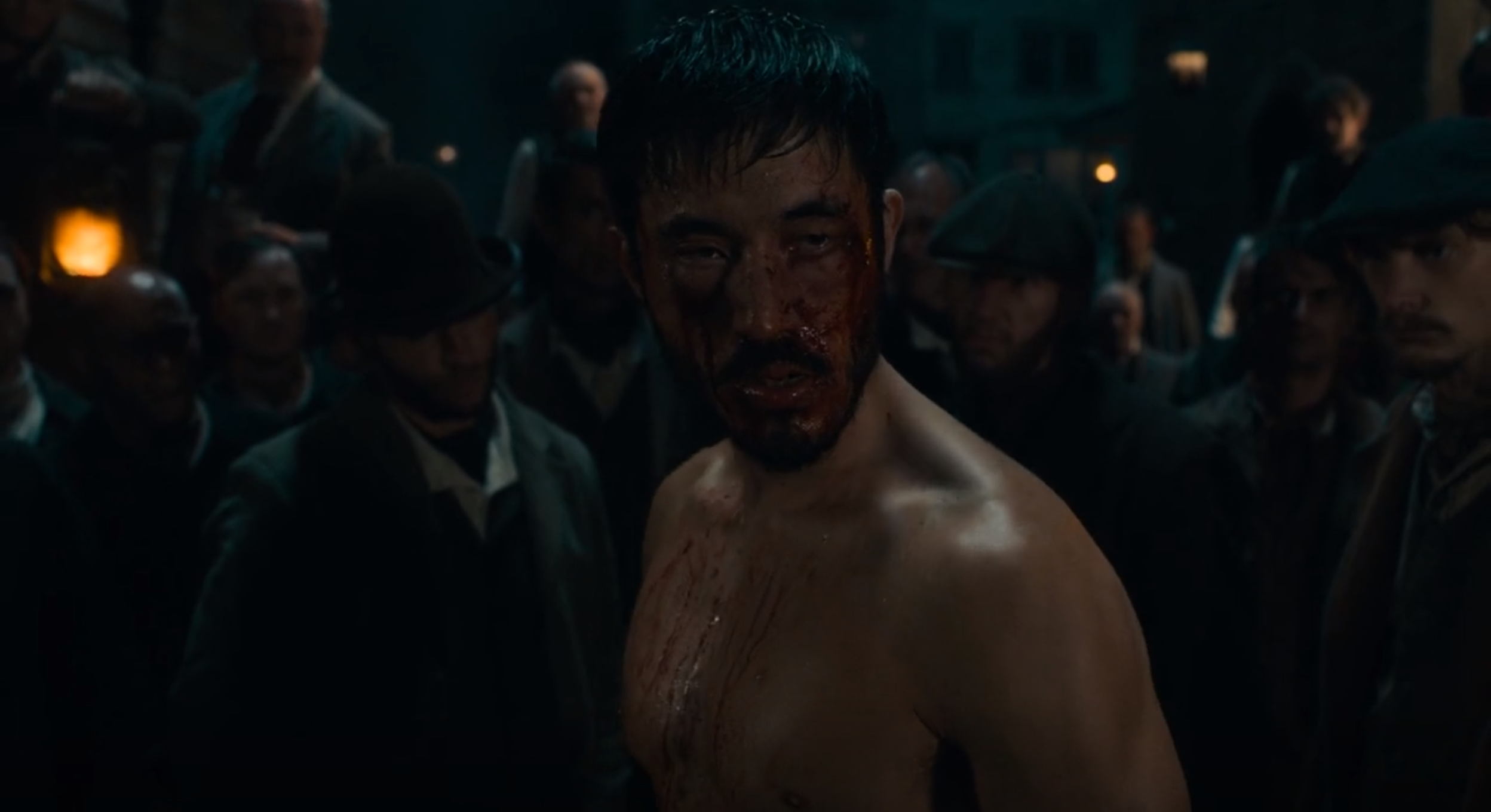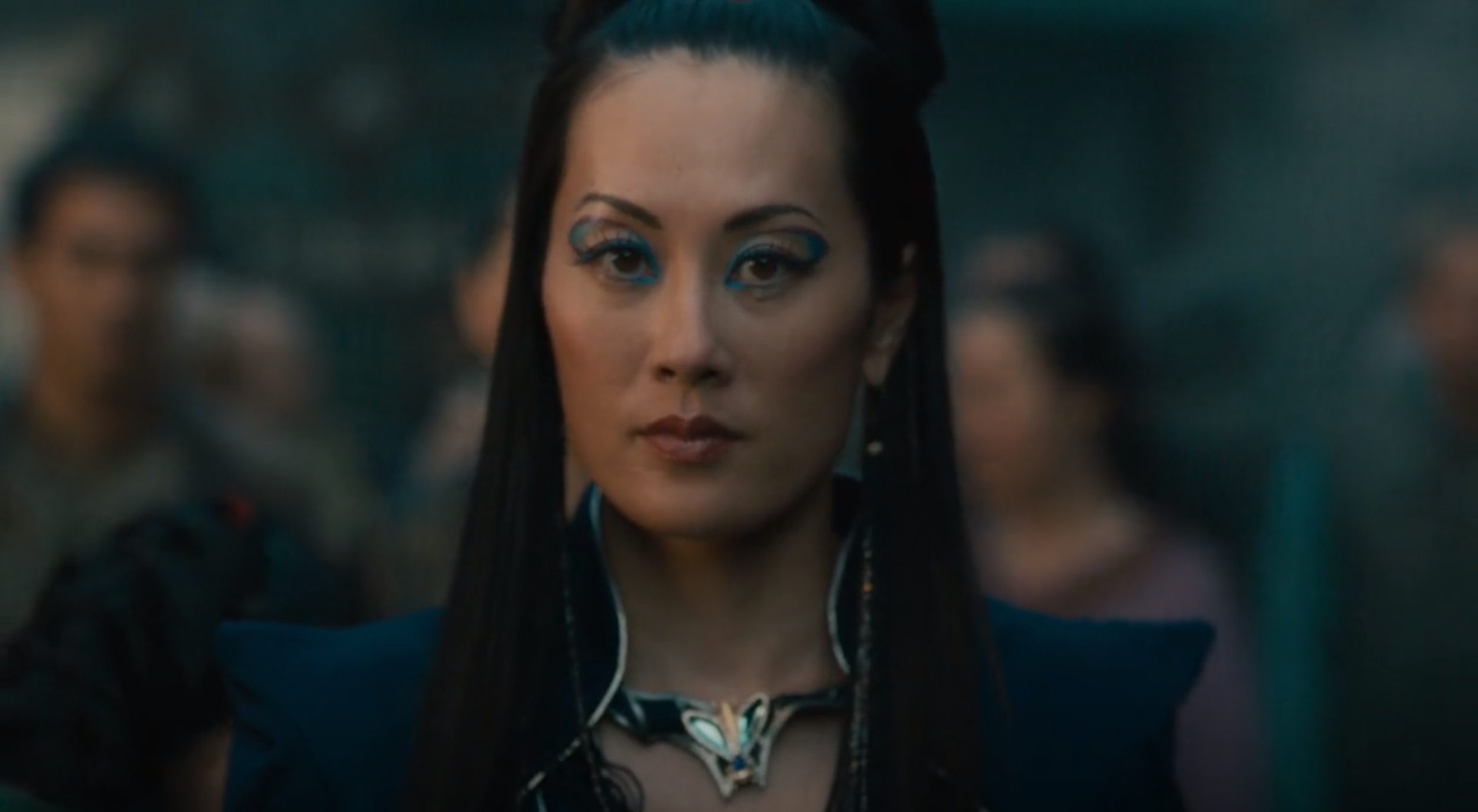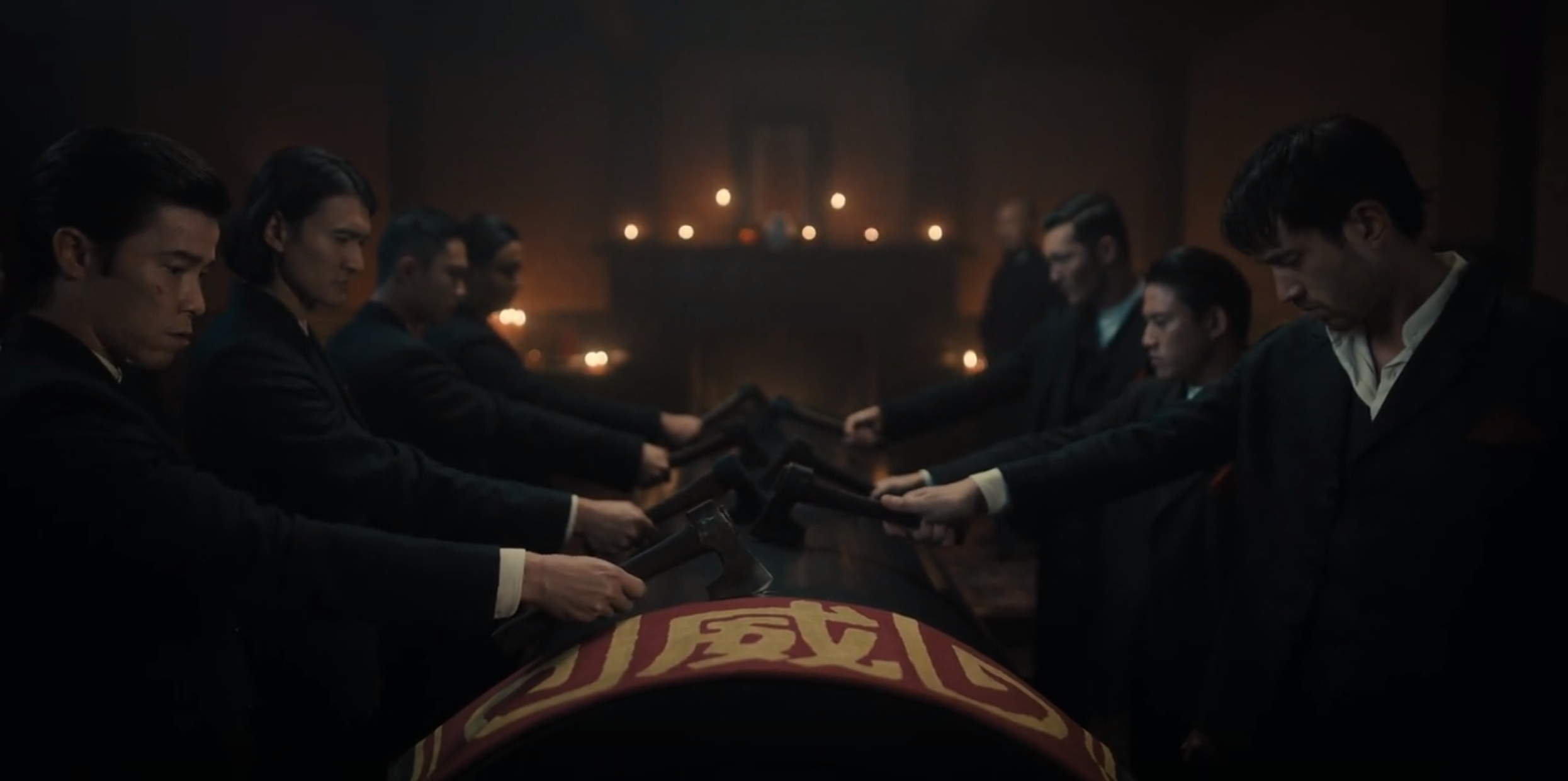Tune In Or Tune Out: ‘Warrior’ Bends History For High-Flying Fun
The third season of the martial arts crime drama Warrior has just wrapped on Max. Originally airing on the cable network Cinemax, the series is actually based on a 1971 pitch by Bruce Lee. Unfortunately, Lee did not sell his idea of a martial arts-trained Chinese immigrant who becomes a “hatchet man” in the 1870s San Francisco Tong (Chinatown gang) Wars back then. Instead, Warner Brothers came out with Kung Fu which starred David Carradine — a white man — as a Shaolin monk with martial arts skills who travels through the wild west of the 1870s. Fortunately for us, Lee’s daughter Shannon found his written pitch and teamed up with Taiwanese-American director Justin Lin (Fast & Furious franchise) to get the series made. Warrior has since gained a loyal following, with a fan petition getting HBO Max to pick it up when Cinemax ceased production of original programming after two seasons.
While Lee originated the idea in 1971, Warrior possesses a modern edge as it sees our hero Ah Sahm (Andrew Koji) navigate conflicts with rival tongs, Irish working men, a less than righteous police force, and more with the help of friends and killer martial arts skills. “Killer” becomes quite literal in this show’s case, as showrunner Jonathan Tropper embraces all the death and gore around the tongs. Tropper also created the Cinemax series Banshee (2013-2016), another action-heavy crime drama set in a small Amish town. These dramatic sensibilities, combined with intense martial arts action and a historical setting that is not seen elsewhere on TV, make Warrior high-flying fun.
Andrew Koji as Ah Sahm
Meet Ah Sahm and the Hop Wei
The show’s bloody yet graceful martial arts fights — and the equally violent fist-to-gut brawls and knife/hatchet slashing — are entertaining to watch, especially considering the level of skill behind them. Koji brings real martial arts experience to his role as Ah Sahm; he not only studied and competed in taekwondo into his twenties, but he also trained in Shaolin Kung Fu at the Shaolin Temple in London. Joe Taslim, who plays the rival tong’s main muscle, Li Yong, was actually a member of Indonesia’s national judo team from 1997 to 2009. Their talents are well showcased by stunt coordinator Brett Chan (Iron Fist, Skyscraper) who takes care to give every character, including the extras, a unique combat style. While there are subtle allusions to Lee’s fighting style, Warrior skips the wire work seen in Lee’s films and stays authentic to martial arts.
The series pulls a lot from the historical Tong Wars of the late 19th century. Tongs were organizations meant to support Chinese immigrants, but they also became associated with criminal activity such as drug running and prostitution. Named for their iconic weapons, “hatchet men” were the tongs’ soldiers. While the Hop Wei (Ah Sahm’s tong) and their rivals the Long Zii are fictional groups, some of the characters are loosely based on real people. Ah Toy (Olivia Cheng), Ah Sahm’s friend and owner of the local brothel, is based on the real madam Ah Toy — the first Asian woman to successfully protect her (unprecedentedly valuable) assets in the U.S. court system. Dylan Leary (Dean S. Jagger), leader of the working class Irish community and antagonist of everything Chinese, is reminiscent of Denis Kearney, the anti-Chinese labor activist who founded the Workingmen’s Party. Introduced in the second season, Nellie Davenport (Miranda Raison) comes to Chinatown to take girls out of prostitution and is based on the nun Donaldina Cameron who did the same work in San Francisco. Even the climax of the second season pulls from the San Francisco Riot of 1877; the riot began as a rally for the Workingman’s Party (also referenced in the series) but over the course of two days it morphed into a mob that destroyed over $100,000 worth of Chinese-owned property and killed four people (the body count is much higher in the show). Even with all the historical allusions, Jonathan Tropper has said that Warrior is more interested in staying true to themes of racism and the historical immigrant experience as opposed to literal facts and events.
Warrior really fleshes out its unique world, exploring many facets of 1870s San Francisco and the broader area. Beyond Chinatown, we see Irish pubs, City Hall, upper class parties, police headquarters, the Barbary Coast, the wild west of Nevada and border towns, Black neighborhoods, Queer speakeasies, and more. While there are many late 19th century period pieces, few to none portray Chinatown nor bring as many elements of the time together as Warrior. The show illuminates the working conditions of Chinese immigrants and prostitutes in a few gritty, genuine scenes that pull the viewer into the realities of that world. It additionally showcases interactions between Chinese, Black, and Mexican communities, contrasting and comparing their concurrent struggles. The set design, in conjunction with how the series employs language, also effectively immerses the viewer. Many of the characters canonically speak Cantonese, and while viewers hear it initially, with a spin of the camera their words shift into English. Then, when they are canonically speaking in English, it is with an accent — a clever way to explore how these characters see and hear themselves versus how others perceive them.
Accordingly, Asian American representation is a clear plus of Warrior. Varied representation is all too lacking in mainstream media, and Warrior steps up to display its Chinese characters as strong, vulnerable, clever, idiotic, virtuous, and evil, sometimes all in one individual. While the series does not quite break out of stereotypical Asian tropes like martial arts and the hypersexualization of women, Warrior isn’t limited to these tropes; it is gratifying to see powerful Chinese characters, including several strong female characters.
In addition to the forceful (and sword-wielding) madam Ah Toy, characters like Mai Ling (Dianne Doan) and Penelope Blake (Joanna Vanderham) represent how women struggled yet won power within the series’ historical, albeit fictionalized, setting. Mai Ling is Ah Sahm’s sister and the ambitious de facto leader of the Long Zii; Penelope starts out as the mayor’s outspoken wife and eventually makes her own strides in business. The series also humanizes each player in the several conflicts around Chinatown. Chinatown squad police officers Bill O’Hara (Kieran Bew) and Richard Henry Lee (Tom Weston-Jones) bring a sympathetic quality to those hunting the tong protagonists as they deal with their own demons, haunted pasts, and loyalties.
Warrior also has its share of comic relief. One example is Young Jun (Jason Tobin), the cocksure heir to the Hop Wei throne and Ah Sahm’s best friend. Perhaps the most intriguing character, however, is Wang Chao (Hoon Lee), a blackmarket and information dealer who plays each tong, the police, and really everyone against one another to survive and thrive. Lee brings real nuance to his performance, especially as Chao finds that being loyal only to himself can lead to a lonely existence.
Olivia Cheng as Ah Toy
Was it Tune In or Tune Out?
Despite the gravity-defying agility of its characters, Warrior takes some time to find its footing. The first season is a Chinatown noir with plenty of snappy one-liners, femme fatales, sex, gore, and power plays. It starts to hit its stride about halfway through season one and really picks up in season two. In the beginning, lots of plotlines are introduced quickly before the characters feel solidly defined. While many spicy little twists are dropped, there are too many and they lack real grounding, so little danger or suspense is actually felt. We learn more about Officer Lee’s mysterious past and see O’Hara struggle with gambling debts, but there is no pressing threat of them coming into real conflict with our tong protagonists.
The plot moves speedily along, but this leaves little time for character development. Each character remains flat in their role (madame, cop, gangster, etc.) for an extended amount of time before we get to see who they are, what they stand for, or what their driving internal conflict is. This development comes eventually for most of the main characters (Ah Toy will fight for her girls, O’Hara may be corrupt but cares for his men and family, Young Jun just wants his father’s respect), but we never get to see what drives Ah Sahm. He does get some depth through plot points such as being on the opposite side of the war from his sister and later wrestling with loyalty to the tong versus trying to truly help his community. However, this is all told more than shown, making his hero arc feel a bit contrived. It does not help that Koji plays the character in a tough, reserved way; this does not give space for the pain and struggle that drives Ah Sahm to stand for something.
The second season does better in terms of character development and organic conflict escalation. As we delve more into the characters and their motivations, conflicts naturally arise and characters react authentically to them, in turn driving the plot further. The series also begins to explore the antagonism between the Irish and Chinese communities more deeply, examining the underlying nuances of the politics around labor, profit, and race. While the plot of the third season isn’t as intense as the second, the characters, relationships, and pre-fight quips have fallen into a steady rhythm. Mai Ling’s power grab arc is a particularly strong one, coming to a head as her character becomes increasingly defined by her ambition. This leads to more conflict not only between the tongs, but also in her relationship with Li Yong; this makes for an organic, and thus emotionally compelling, interpersonal conflict. Cheng also gets more room to show her range in playing Ah Toy, whose beliefs, desires, and personal code are challenged and deepened. Towards the end of the season, there are hints at commonalities between Ah Sahm and the Chinese community, and Leary and the Irish community, complexifying the broader conflict of the series.
One of the strongest elements by the third season is the chemistry between friends. It takes a while for these relationships to settle in, but when they do, the banter and comfortability amidst all the chaos really help ground the show. That being said, relationships in the series outside of friendships often lack chemistry and can feel forced. Ah Sahm’s romantic relationships each season come across as ingenuine; the lack of chemistry and screen time between Ah Sahm and Mai Ling undermines the siblings-at-war conflict. Additionally, while Ah Sahm and his tong brothers have a fun, warm friendship, it lacks the “I would kill/die for you” bond that is so fundamental to the tongs.
Warrior could also dig deeper into the ideals it presents. For example, while Penelope advocates for the Chinese community, she also uses them for cheap labor so that she does not have to hire white workers at a higher price. This characterization would be improved if the show questioned her actions and did not portray her as a wholly righteous character. Also, while politics and peaceful activism are mentioned as potential avenues for positive change, in the end, every character turns to violence; this glorifies violence as a catalyst for change without much question.
Jason Tobin as Young Jun, Chen Tang as Hong, and Olivia Cheng as Ah Toy
Who will like it?
If you want a series that dives deep into the gritty, authentic details of history, the fraught questions of race and capitalism, and the traumas of its characters, Warrior, admittedly, might not be for you. If you’re down for a fun show filled with well-choreographed martial arts, dramatic power plays, and a unique world that finally gives Chinese characters and actors the spotlight, watch Warrior. The series could be more grounded in accurate history, but it trades that for the grandeur of fantasy tongs that do not need to match up with past happenings and people. The series could be more committed to exploring the psyches of its characters, but then it wouldn’t have as much time for action. The series could dive deeper into causes of racial antagonism, but who knows, maybe the high-flying fun of Warrior will create a space for future series to do so. But for now, raise a glass to the late, great Bruce Lee and the people who came before us, and have a fun time watching Warrior.




